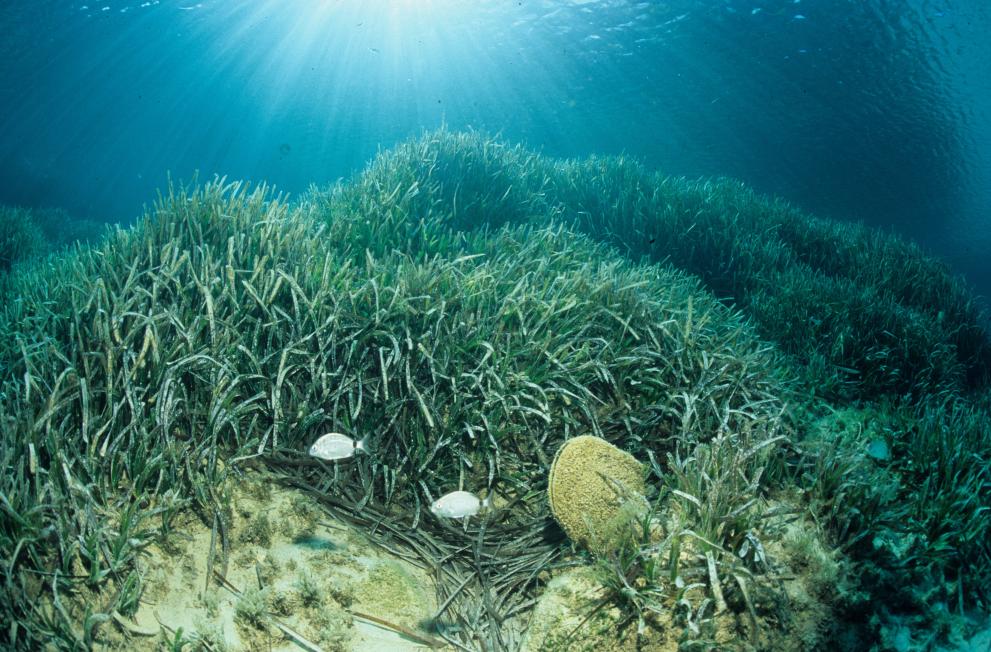
Posidonia meadow
This study investigated Member State implementation of LULUCF for wetlands, focusing mostly on coastal wetlands (blue carbon) but also examining freshwater wetlands. It produced:
- a database of national greenhouse gas inventories from 1990 and 2021 derived from UNFCCC reports.
- digital maps of
- wetland extent using global maps for mangroves, tidal marshes and inland wetlands and a UNEP map for saltmarshes augmented by HELCOM and national maps for Bulgaria, Denmark and Greece.
- land cover changes for 1990, 2000, 2006, 2012, and 2018 from Corine ([1]) for saltmarsh and from the literature for seagrass
- stocks of organic carbon from 30 cm and 100 cm cores in blue carbon habitats.
It found that:
- only Malta explicitly reported saltmarsh as a separate category in its inventory. French included Guyana mangroves under forests rather than wetlands. Nobody included seagrass at all.
- Member States had different approaches to classifying wetlands, used different tier levels for estimating emissions and applied different criteria for distinguishing between managed wetlands which should be reported and unmanaged ones which should not. The United States considers all saltmarsh as managed
- there is little evidence of private funding for restoration.
- it is impossible to estimate the impact and cost of different restoration methods. An analysis of over 100 projects found that funding has been dedicated to the restoration activities rather than holistic monitoring systems which should be for at least 10 years to be effective.
Details
- Publication date
- 6 May 2025
- Author
- Directorate-General for Maritime Affairs and Fisheries
